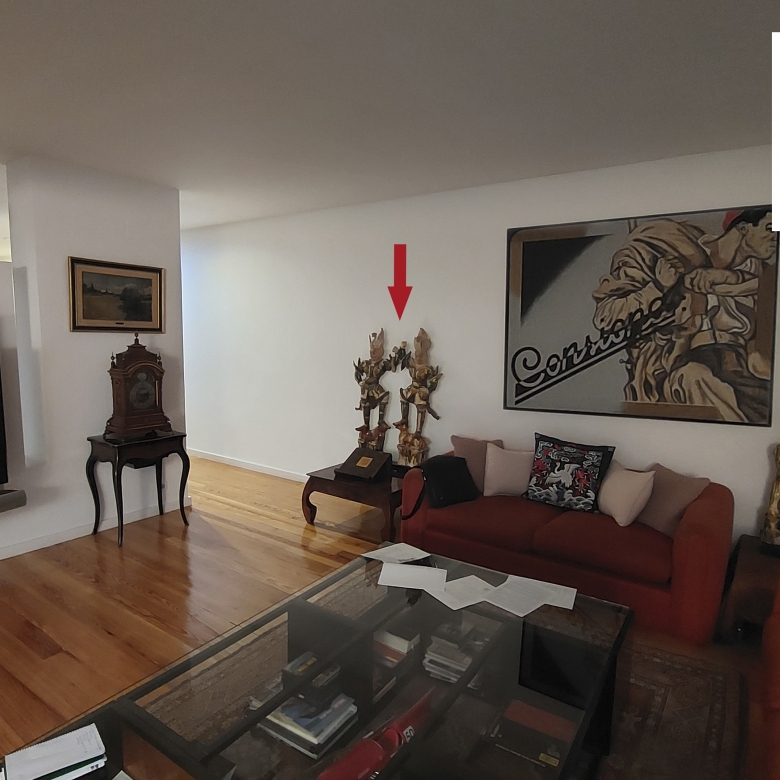ASIAN ART AUCTION 29 DECEMBER 2022
Ceramic figure 'Musician on horseback' with Sancai glaze, Tang dynasty (618 - 906)
Press 'Program an autobid'in order to confirm
A figure modelled in kaolin ware and decorated in amber, green and cream-coloured 'sancai' glaze (三彩) and polychrome. The body of the animal is hollow and has an opening in the lower part of the belly.
It depicts a servant musician holding two cymbals at a slight distance with the intention of striking them. He is mounted on horseback, astride a saddle, with a serious but serene expression. He wears a long tunic that reveals his shoes and stirrups. The details of the figure are well executed and the proportions are maintained. The horse has a robust body, its head is cocked to one side, its mouth is half open as if it were neighing, and it stands with its legs stretched out on a rectangular base.
The face is unglazed and has traces of black and white slip on the hair. The details of the features would have been polychromed, although they have disappeared. The horse's body and saddle are covered in amber and cream-coloured 'sancai' glaze, and the dress in green, amber and cream. The glaze slips during firing and the colours intermingle from the top to the base, leaving part of the pedestal uncovered. The result is a decorative and harmonious combination of colours that gives each piece a unique result.
Height: 42.5 cm; Length: 37 cm.
References:
Christie's, 19 March 2008, "A sancai-glazed pottery figure of a horse and rider". Auction price: USD 49,000.
Documentation:
Accompanied by a report and "Thermoluminescence Test" carried out by the TL ASA Expertises Francine Maurer Laboratory. Report no.: 12.18.25 - TL 102.226, year 2001. The result confirms, from the extraction of material from the piece, compatibility with ceramic materials fired in Tang dynasty period.
Provenance:
Spanish private collection.
This important private collection comes from a successful national and international construction and investment businessman who lived in different parts of Spain and the South of France. This part of the collection, exhibited exclusively for the first time at auction, focuses on Chinese ceramics from the Tang dynasty and is a collection of museum quality pieces. The family's tradition of travel dates back to the success of an ancestor who in the 1930s travelled to Manila, Shanghai, Cairo, Havana, etc., practising the sport of "cesta punta", and in particular, motivated by an interest in discovering different cultures, which led them to build up a large collection. In general, their interest in art is such that their collection includes pieces of both Asian and European origin.
The acquisition of the collection began in the 1990s and was built up during years of study in Madrid and on various trips to Paris, New York, Hong Kong, Spain and Germany; at reputable antique dealers such as "Arch Angel" in Hong Kong and international auctions such as Nagel. To this end, specialists have also collaborated in the selection, study and verification of the pieces, as can be seen in the accompanying documentation: invoices, studies and reports.
Additional information:
The function of these figures was to protect the tombs and accompany the deceased, and they were endowed with visual qualities for this purpose. The first such figures were seen in the tombs of Li Feng, Prince of Guo (622-675). Large 'sancai' figures of better quality were included in the tombs of royalty and nobility, both in the Chang'an capital of the time and in the city of Luoyang. Their production declined in the late 8th century after the An Lushan rebellion (AD 755-63) due to the decline of the dynasty.
They are decorated with brightly coloured glazes that can be seen on many Tang-era wares from the 7th century onwards. The type of glaze was called "Sancai" (三彩) because of the use of three low-temperature firing colours. They are coloured by metallic oxides of copper, iron, cobalt and manganese. They are an evolution of the tradition of Han and Wei single-colour ceramics. The material used to make these ceramics is kaolin with fine white texture and glossy glazes, representing the peak of the development of coloured glazed ceramics in China. The result is a magnificent and dazzling artistic effect. An example would be the Luoyang Museum's figure set "洛陽博物館" and the Shaanxi History Museum's "陕西历史博物馆".
The theme of figures of horsemen on horseback, is emblematic of funerary sculpture from the early 8th century, during the peak of the Tang dynasty. It was common in funerary ensembles to include musicians, ladies or warriors on horseback, along with other figures of servants, merchant caravans and guardians. Such figures are called mingqi (shining objects) in Chinese and were intended to provide service and companionship to the deceased in the afterlife.






































